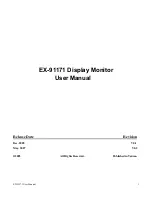
Dakota Ultrasonics
108
adjusted, approximate length already entered, and the
MAX II
is currently setup
and ready to measure in elongation mode.
2) Apply a drop of couplant to the bolt or transducer, and attach it to one end of
the bolt. Rotate the transducer clockwise and counter clockwise applying a
small amount of pressure to eliminate any excess couplant between the
transducer and bolt.
Be sure to always place the transducer in the same
location
.
This will help to eliminate any potential measurement errors
caused by changing the sound path.
3) Record the ultrasonic length “L
0
” of the sample bolt at the above minimum
temperature - 48
0
F.
4)
Repeat step 1 - 3
at the target temperatures (T
1
through T
5
) – 48, 68, 88,
and 108
0
F (other similar range with 5 temperatures), measuring the
ultrasonic lengths (L
1
through L
5
) respectively. This process must be done
for each of the sample bolts in the experiment.
5) Use the equation below to calculate a linear regression, using the
temperatures and lengths recorded for all the sample bolts to determine the
temperature factor.
6
2
2
10
n
x
x
n
y
x
xy
eFactor
Temperatur
x = temperature, y = change in reference length, n = number of sample points per bolt
Summary of Contents for MAX II
Page 2: ......
Page 7: ......
Page 8: ......
Page 54: ...Dakota Ultrasonics 46 Figure 6 Reflection in a bending bolt ...
Page 215: ......
















































